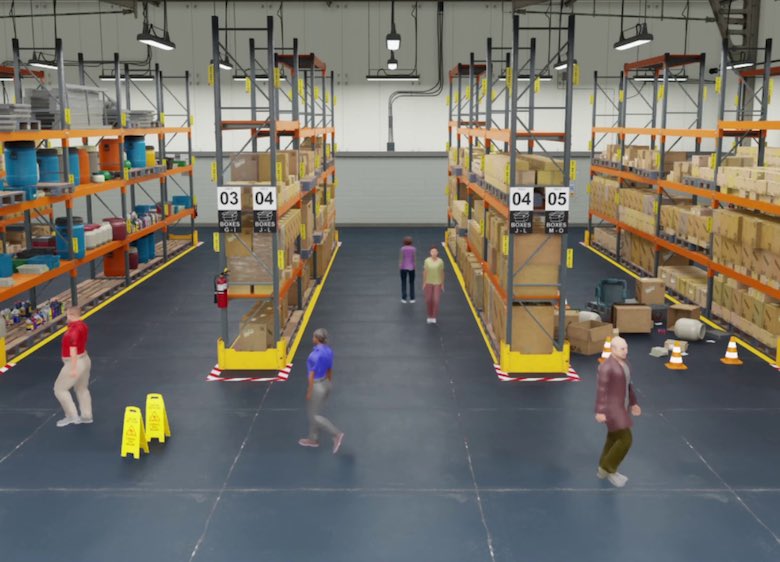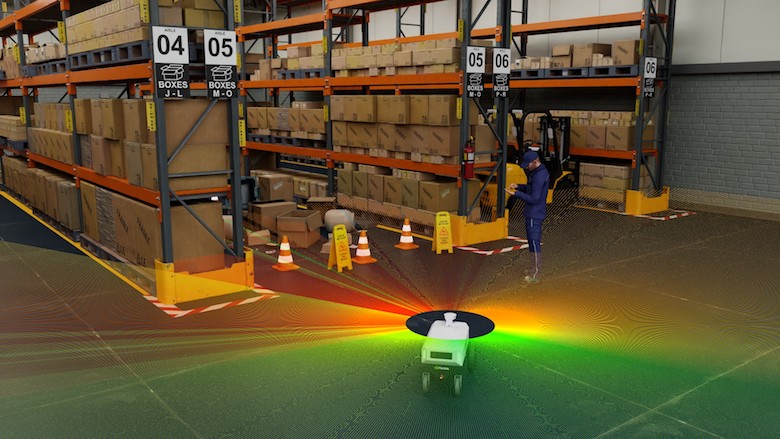|
Listen to this article  |
At CES, NVIDIA announced a number of major updates to its robotics simulation and synthetic data generation tool, Isaac Sim. The major updates include cloud accessibility, support for ROS 2 Humble and Windows, the ability to add human characters to a simulation environment and more.
With Isaac Sim now available in the cloud, multidisciplinary teams can collaborate on robotics projects from all over the world. NVIDIA said this offers development teams increased accessibility, agility and scalability for testing and training virtual robots.
Developers can now add human characters to Isaac Sim. The human characters can carry out a variety of common tasks you’d see at a warehouse or manufacturing facility, including stacking packages or pushing carts. NVIDIA said that with humans increasingly working alongside collaborative robots (cobots) and autonomous mobile robots (AMRs), it’s critical that people and their common behaviors are added to simulations.
For developers who use the Robot Operating System (ROS), Isaac Sim now supports the ROS 2 Humble version of the middleware suite, and Windows. NVIDIA said all of the Isaac ROS software can now be used in simulation. NVIDIA has long supported ROS, but it’s taking its involvement to another level with ROS 2, the more hardened, secure version of the middleware suite.

Robotics developers can now add human characters to NVIDIA’s Isaac Sim tool. | Credit: NVIDIA
Intrinsic, a software company that launched out of the X moonshot division of Alphabet in mid-2021, acquired the Open Source Robotics Corporation (OSRC). The OSRC is the for-profit arm of Open Source Robotics Foundation, which is the developer of the popular Robot Operating System (ROS). Intrinsic is also acquiring Open Source Robotics Corporation Singapore (OSRC-SG), the division of the company that led directly to the release of Open-RMF for interoperability.
To be clear, Intrinsic did not acquire the Open Source Robotics Foundation (OSRF), the non-profit that has and will continue to be responsible for the day-to-day activities and development of ROS, Gazebo, Open-RMF and the entire ROS community.
Other updates in the Isaac Sim 2022.2 release include:
Improved motion generation extension: NVIDIA said this will simplify the integration and benchmarking of motion control algorithms for robot arms. The included algorithms, RMPFlow, create trajectories for the robots with intelligent collision avoidance. In addition to improved performance, this release features a number of usability improvements, including a graphics editor for Lula robot description files. A new set of robot arms have also been added from Festo, Flexi, Kawasaki and Universal Robots.
Fleet optimization: Introducing the cuOpt for Isaac Sim extension, which is a deployment of the NVIDIA cuOpt engine integrated directly with Isaac Sim. NVIDIA cuOpt is an operations research optimization API to help developers create complex, real-time fleet routing. These APIs can be used to solve complex routing problems with multiple constraints and deliver new capabilities, like dynamic rerouting, job scheduling, and robotic path-planning.

NVIDIA said its Isaac Sim tool can now render physically accurate data from sensors in real time. | Credit: NVIDIA
New research tools: Significant new capabilities for robotics researchers include performance improvements for Isaac Gym (reinforcement learning). Isaac Cortex, for collaborative robot programming, has new examples. Finally, a new open-source tool, Isaac ORBIT, provides simulation operating environments and benchmarks for robot learning and motion planning.
Rendering physically accurate data from sensors in real time: In the case of an RTX-simulated lidar, ray tracing provides more accurate sensor data under various lighting conditions or in response to reflective materials.
Isaac Sim also provides numerous new simulation-ready 3D assets, which are critical to building physically accurate simulated environments. Everything from warehouse parts to popular robots come ready to go, so developers and users can quickly start building.
Credit: Source link


Comments are closed.